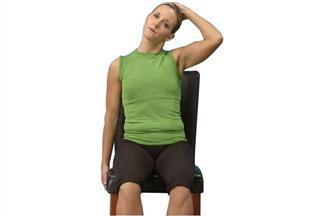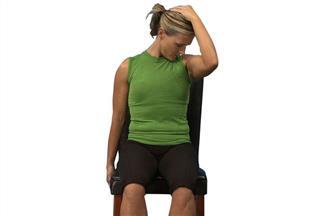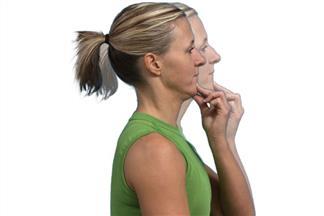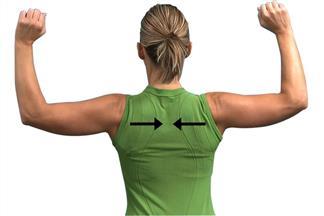4 Chair Stretches to Ease Neck, Shoulder, and Upper Back Pain
AndreyPopov/Getty
The repetitive movements you make every day can be a big factor in aggravating or even causing pain in the neck, shoulders, and upper back. Try these four stretches from chiropractor Dr. Amy Shevokas to find relief.
The discomfort experienced from chronic neck, shoulders, and upper back pain can often make it difficult to lead a regular life. Not being able to turn your head properly because of a stiff neck or experiencing searing back pain while bending over can make it impossible to function normally.
Worldwide, back pain is the single leading cause of disability, and according to the American Chiropractic Association, up to 80 percent of the population will experience back pain at some point in their lives, Furthermore, neck pain ranks in the top five disorders in the U.S. with 10 to 20 percent of Americans experiencing chronic neck pain.
Chiropractor Dr. Amy Shevokas says there are many causes for chronic pain in the neck, back, and shoulder area.
“Old injuries, the aging process, and stress and anxiety are some common reasons for chronic pain in the neck, back, and shoulders,” says Shevokas, who runs Chicago-based Crosstown Chiropractic with Dr. Michael Aho. “In particular, the repetitive movements you make doing everyday daily activities can be a big factor in aggravating any pain you have or might even be the cause of it.”
Why Does My Neck Hurt?
Shevokas maintains that one of the biggest causes of neck, shoulder, and upper back pain, however, is poor posture, which can lead to upper crossed syndrome (UCS) and disfigurement in the neck, shoulder, and chest muscles. The upper trapezius and the levator scapula—back muscles of the shoulders and neck—can become strained and overactive from misuse.
“If you are a driver, an office worker, a teacher, or a nurse, basically if you have any job that causes you to be bent over all day, you are very likely to develop back, shoulder, and neck pain,” Shevokas says. “Those repetitive work habits—the things you do hundreds of times a day—create what we call a micro-trauma every time you do that motion. So, even though you didn’t do something as drastic as fall down the stairs, over time those repetitive micro-traumas can lead to serious injury.”
She says the first step to recovery is to become more self-aware of your own body and to avoid certain positions.
“You want to make sure you’re keeping that spine as neutral as possible when you're doing daily activities,” Shevokas says. “To give my patients a good visual of what NOT to do, I tell them to imagine a C-curve in their back, kind of like a hunched over shrimp. You really want to add more extension by looking up and then bringing your arms back to stretch—something we call a posture break. I encourage my patients to take posture breaks periodically throughout the day so that they become more mindful of how they’re holding their bodies, as well as reminded to do some stretching.”
She suggests taking at least one posture break an hour. Stretching, walking around the office, going to the water cooler, or even breaking out into Cobra pose can be really helpful for alleviating chronic pain.
Shevokas also recommends the following stretching and strengthening exercises to help improve upper motor cross syndrome. Even if you do not have poor posture, she says, you will likely benefit from adding these stretches to your routine.
Upper Trapezius Stretch

Images courtesy of POCket Rehab
- Sit in chair with good posture and your spine in a neutral position
- Grasp bottom of chair with hand
- Tilt ear toward opposite shoulder, using opposite hand to gently increase stretch
- Hold for 10 to 15 seconds and repeat three times
- Repeat on opposite side
- Stretch within your tolerance; there should be no pain
Levator Scapula Stretch

- Sit in a chair with good posture and your spine in a neutral position.
- Grasp the bottom of the chair with your hand.
- Rotate your head to the opposite side, then bring the chin down toward your armpit.
- Use the opposite hand to increase the stretch as tolerated.
- Hold for 10 to 15 seconds and repeat three times.
- Repeat on the opposite side.
Chin Tuck

- Sit or stand in an upright position.
- Bring one hand to your chin.
- Slowly push your head straight back.
- Return to starting position and repeat 15 times.
Shoulder Blade Squeeze

- Stand with your elbows and shoulders at 90 degrees and arms out to the side of your body.
- Maintain this position.
- Squeeze shoulder blades back together.
- Hold for 5 seconds and repeat 10 times.
Want more stretches? Try these three yoga poses for neck and shoulder tension.


